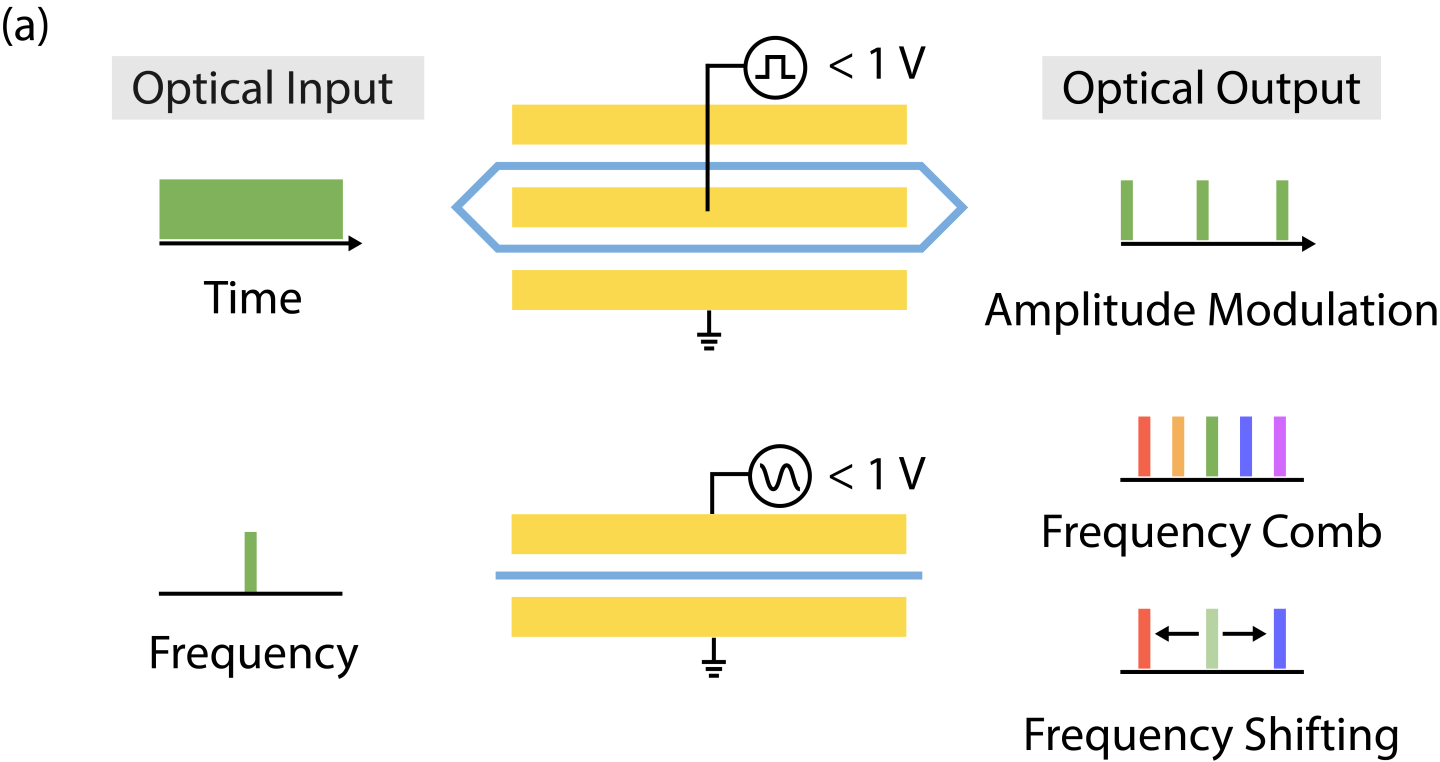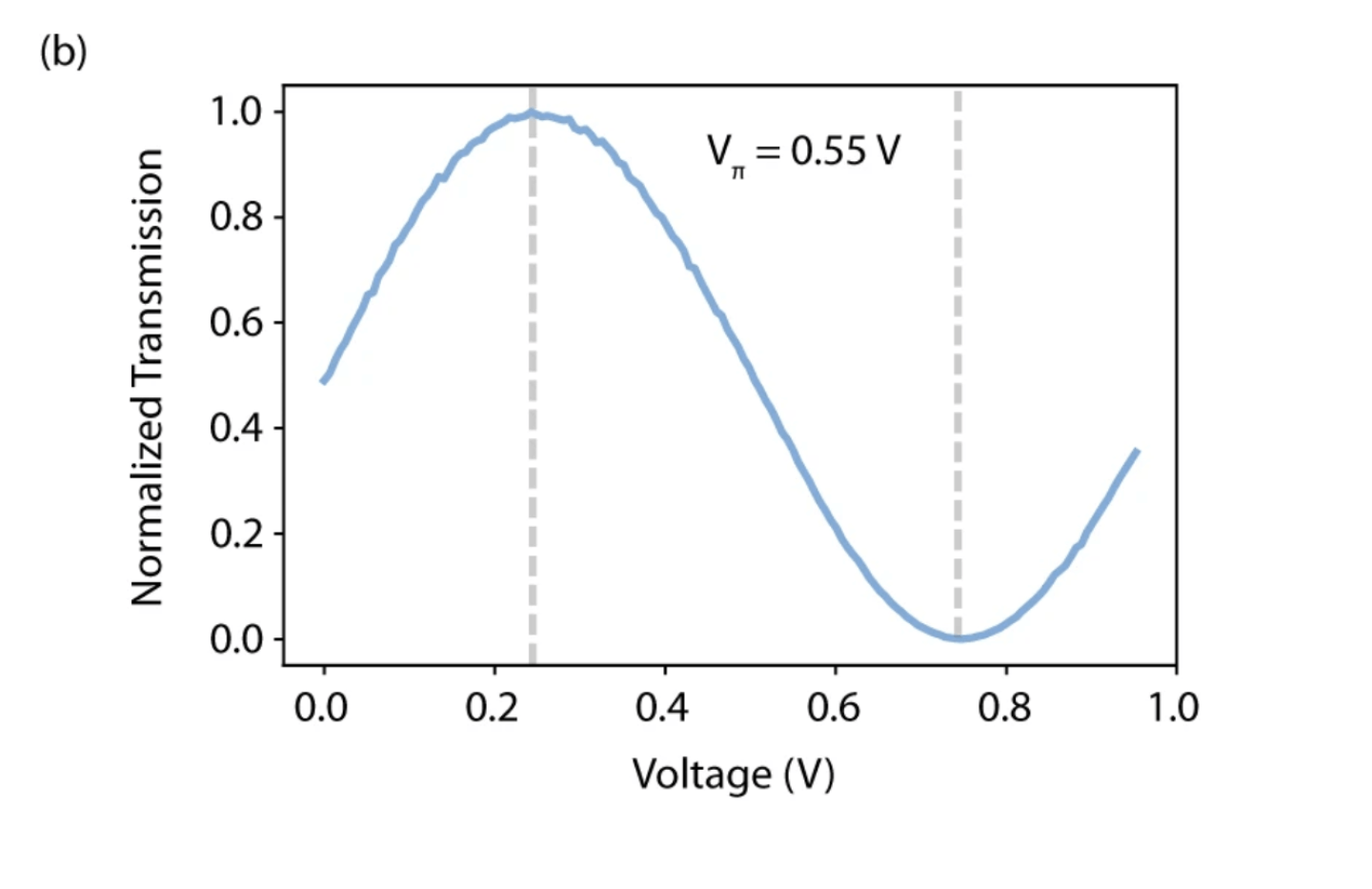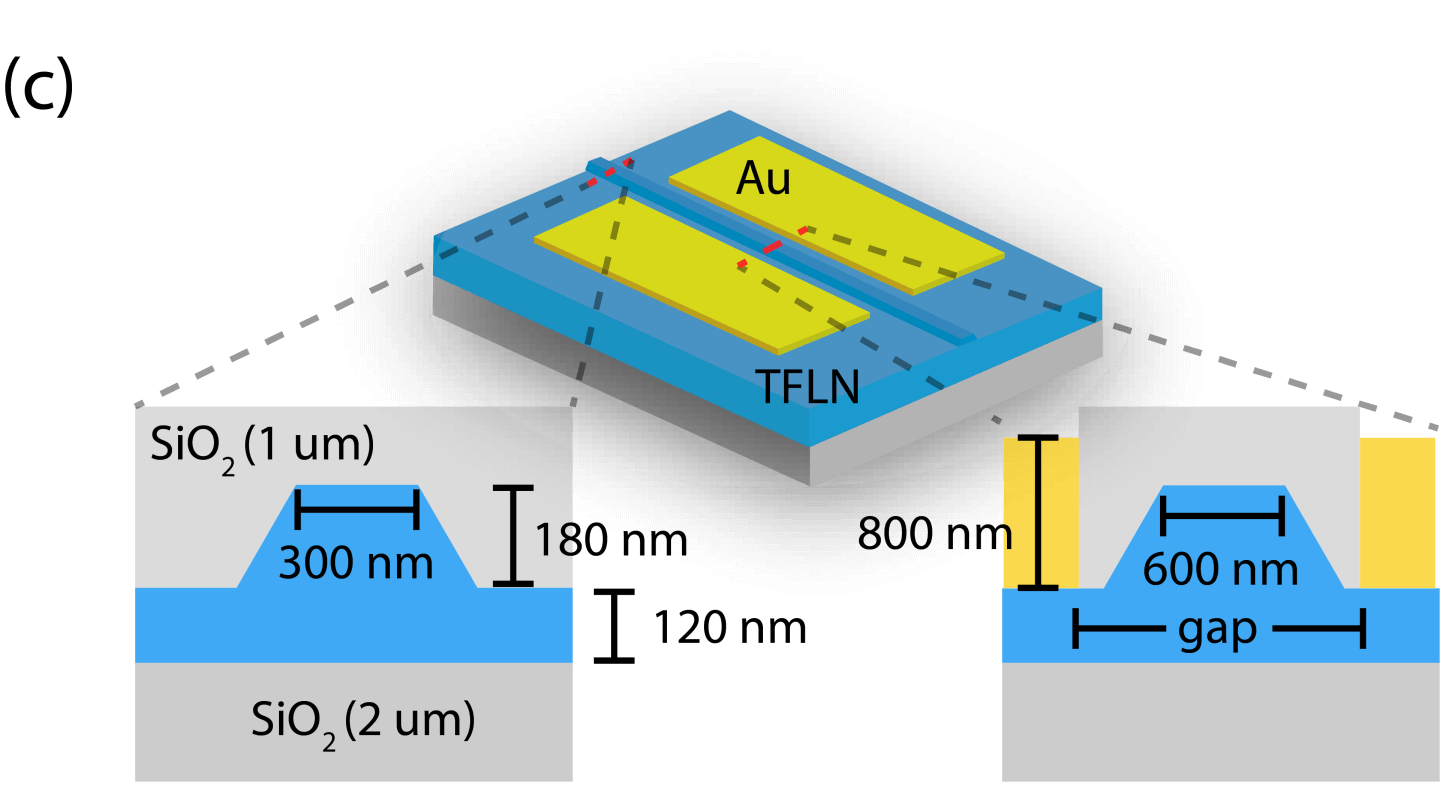News
Most electro-optic modulators used today leverage voltage to control the phase, intensity, and color of light. Able to manipulate long wavelengths of light invisible to the naked eye, these devices are the backbone of today’s digital communications and internet infrastructure. New types of electro-optic modulators capable of controlling different parts of the optical spectrum – including shorter, visible wavelengths – could unlock a whole new world of applications.
Researchers led by Marko Lončar at the Harvard John A. Paulson School of Engineering and Applied Sciences (SEAS) have fashioned an electro-optic modulator that can easily and efficiently manipulate visible and near-infrared light. They’ve reported their work in Nature Communications.
“We’ve demonstrated we can shift the color of light much more efficiently than has been previously possible with electro-optic modulators,” says Dylan Renaud, co-first author of the paper and graduate student of applied physics in Lončar’s lab.
“[These electro-optic modulators] will enable augmented and virtual reality applications, precision measurements of distance and time, environmental monitoring and sensing, as well as secure communications enabled by the laws of quantum physics,” says Marko Lončar, Tiantsai Lin Professor of Electrical Engineering and director of the Laboratory for Nanoscale Optics at SEAS.
Fig. 1: Ultra-low Vπ modulators operating at visible-to-near-infrared wavelengths.
Renaud says that could have especially promising implications for quantum information applications because many candidate “qubits ” — the basic building blocks of quantum technology which use entangled quantum states to remember information and perform calculations – emit light at visible wavelengths.
Harnessing precise control over the color of this qubit light emission will be crucial for future quantum applications. The modulator developed by Lončar’s team achieves this feat and can shift light’s frequency – its color– multiple line widths across the spectrum of light. The color change is achieved by applying voltage onto the electro-optic modulator, changing how fast photons are moving and, therefore, the color of the light beam.
Compared to invisible, infrared light (commonly used in telecommunications devices), visible and near-infrared light has a much smaller wavelength. The team’s biggest challenge was figuring out how to engineer a scaled-down modulator that could work with much smaller wavelengths of light. When they reached their goal, they observed surprising benefits.
“What’s interesting is that when we scaled down and confined visible light, we saw the interactions between the optical field and the microwave field became stronger inside the modulator,” Renaud says. “From this, we saw a huge boost in efficiency compared to traditional modulators.”
“Data traffic in telecommunications is increasing rapidly and demanding a larger and larger energy footprint to keep up with the desired bandwidth,” says Daniel Rimoli Assumpcao, co-first author of the paper and graduate student in applied physics in Lončar’s lab. “Our scaled-down modulators require less voltage to operate, driving the energy needs way down. And if you need less power, you can push more information faster at higher efficiency.”
Assumpcao also says the smaller electro-optic modulators could enable ultra-fast, short-haul communications. Whereas most of today’s modulators are meant for longer wavelengths and longer-haul optical communications (over distances of miles), modulators using shorter visible or near-infrared wavelengths could enable more efficient, higher-speed data communication over short distances (fractions of a mile or even several meters).
Additional authors on the paper are Graham Joe, Amirhassan Shams-Ansari, Di Zhu, Yaowen Hu, and Neil Sinclair.
This work was supported by Air Force Office of Scientific Research (grant nos. FA9550-20-1-0105 and FA9550-19-1-0376), Army Research Office MURI (grant no. W911NF1810432), National Science Foundation (grant nos. EEC-1941583, OMA-2137723, and OMA-2138068, and GRFP no. DGE1745303 ), US Department of Energy (grant no. DE-SC0020376), MIT Lincoln Lab (grant no. 7000514813), a Ford Foundation Fellowship, a Natural Sciences and Engineering Research Council of Canada NSERC PGSD scholarship, a Harvard Quantum Initiative (HQI) postdoctoral fellowship, A*STAR Central Research Fund, AQT Intelligent Quantum Networks and Technologies, and the National Science Foundation’s Center for Integrated Quantum Materials (grant no. DMR-1231319).
Research reported in this publication was supported as part of the AWS Center for Quantum Networking’s research alliance with the Harvard Quantum Initiative (or HQI).
Topics: Optics / Photonics
Cutting-edge science delivered direct to your inbox.
Join the Harvard SEAS mailing list.
Scientist Profiles
Marko Lončar
Tiantsai Lin Professor of Electrical Engineering







